“Yet Let’s Be Content and The Times Lament…”
[Editor’s Note: Over recent years, we’ve witnessed increased bi-lateral cooperation between our five National Defense Strategy threats — China, Russia, North Korea, Iran, and Violent Extremist Organizations (VEOs). Most notably, cooperation between North Korea and Russia has blossomed — from 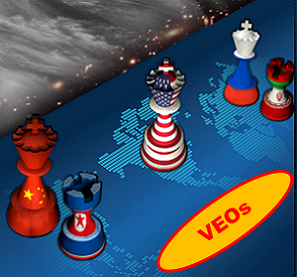 Kim Jong-un’s provision of mass quantities of artillery ammunition to help alleviate Russian “artillery starvation” last year in Ukraine and KN-23/KN-24 (Hwasong-11 family) Short-range Ballistic Missiles used with limited success against Ukraine this past winter — into the recently signed strategic Military Assistance Pact, pledging mutual aid if either nation faces aggression. Iran has similarly provided beleaguered Russia with shipments of Shahed-136 One-Way Attack Unmanned Aerial Vehicles (OWA-UAVs) and artillery rounds for its war in Ukraine, while in addition to dual use technological support, China is now reportedly providing Russia with lethal military aid.
Kim Jong-un’s provision of mass quantities of artillery ammunition to help alleviate Russian “artillery starvation” last year in Ukraine and KN-23/KN-24 (Hwasong-11 family) Short-range Ballistic Missiles used with limited success against Ukraine this past winter — into the recently signed strategic Military Assistance Pact, pledging mutual aid if either nation faces aggression. Iran has similarly provided beleaguered Russia with shipments of Shahed-136 One-Way Attack Unmanned Aerial Vehicles (OWA-UAVs) and artillery rounds for its war in Ukraine, while in addition to dual use technological support, China is now reportedly providing Russia with lethal military aid.
In today’s post, the Army’s Mad Scientist Laboratory welcomes back COL John Antal (USA-Ret.) with his timely “what if?” nightmare scenario set in a not-too-distant-future — imagining an Operational Environment where today’s disparate bi-lateral cooperation among NDS threat members has morphed into a coalition of autocracies. Throw in a distracted United States, enmeshed in a shooting war with Iran, struggling to prop up a faltering Ukraine, all the while wracked by foreign-inspired civil disruptions at home and you can forget about yester-year’s rosy assessments of our ability to fight a two-theater war — COL Antal imagines his thinly-veiled dictator orchestrating a “Full-on Donkey Kong” fever dream of simultaneous surprise strikes by Russia on U.S. and NATO 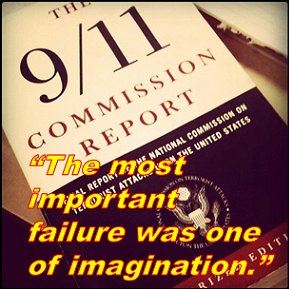 allied forces across Europe, by North Korea targeting U.S. forces in the Republic of Korea, and by China attacking U.S. forces across INDOPACOM.
allied forces across Europe, by North Korea targeting U.S. forces in the Republic of Korea, and by China attacking U.S. forces across INDOPACOM.
“Preposterous,” you say? “It couldn’t happen!” Remember the 9-11 Commission’s admonishment that the most important failure was one of imagination… Read on!]
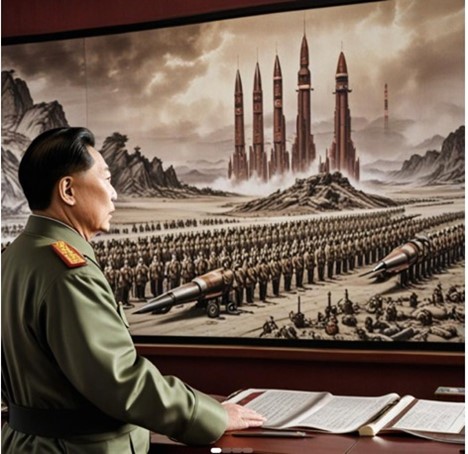
“What is this?” The dictator barked.
“Sir, this is an emergency software update,” a tall general in an immaculate combat battledress uniform replied. The screen image flipped again, this time correcting itself to be right side up. Inside the command center, figures appeared like specters, each fully engrossed in their respective roles of monitoring, analyzing, and advising. The soft hum of the communications equipment mixed with their whispered discussions, generating an atmosphere filled with tension and anticipation. “Our plan includes implementing this update at all our communication sites.”
The dictator nodded. An aide brought him a cup of tea. As the dictator sipped it, he thought about a line from a song that was running through his fevered brain. He whispered the words. “Rockets’ red glare. Bombs bursting in air… humph… We will finally change the world order and wreak revenge for a hundred years of humiliation.”
“Sir?” The general asked, his left eyebrow raised in confusion.
“Nothing,” the dictator replied, placing the cup on the table in front of him. He knew he was both orchestrating and beholden to the complexities of modern warfare and this briefing was critical. “Proceed with the update.”
The general nodded. “Sir, the American fleet, comprising a dozen US Navy combat ships, three destroyers from Japan, and one from Australia, have passed our quarantine line and have docked in the island’s major southern port. The twenty-three merchant ships they escorted during the incursion are in the port unloading fuel and supplies.”
The dictator’s expression remained indiscernible, betraying neither elation nor dismay. He thought about the events that had transpired in the past six tumultuous months. A world away, the war in Gaza continued unabated, and after suffering nearly 6,000 Hezbollah rocket and missile attacks in northern Israel, the Middle East had exploded. Israel launched a full-scale invasion into Lebanon to push Hezbollah forces north of the Litani River. Reacting swiftly, Hezbollah launched thousands of missiles towards Israel. A day later, Iran and its surrogates in Yemen launched massive rocket, missile, and drone attacks aimed at Tel Aviv, Jerusalem, Haifa, and other Israeli cities and settlements.
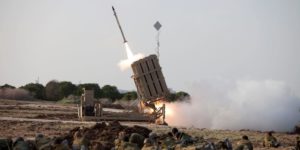
Israel’s Iron Dome could not handle the overwhelming attack, and as a result, Israeli casualties dramatically mounted, and towns and villages burned. Hoping to avoid a war prior to the Presidential election, the United States first hesitated and then finally committed military forces to support their Jewish allies. In a massive movement of combat power, the United States military engaged with significant naval and air forces against Iran and its proxies. Consequently, Iran and its surrogates targeted American forces in the Middle East. The United States was now in a shooting war and taking casualties.
The first part of the dictator’s grand plan was unfolding. He saw the power of the forces he had set in motion. The momentum of the chaos was enveloping his enemy. This would consume more American resources and the military might of America’s allies as the fighting escalated.
Meanwhile, in Ukraine, Russian forces were attacking relentlessly, regardless of their horrendous losses in men and equipment. The Ukrainians were fighting bravely, desperately, but the weight of the Russian attacks forced a breakthrough of the Ukrainian defenses. Ukrainian forces fell back in disorder and a mass refugee exodus from Ukraine began. The US and NATO rushed to respond with an emergency resupply operation, but it was proving to be too little, too late. With mounting Ukrainian losses in both manpower and territory, the dictator expected Kyiv to surrender to a triumphant Russia despite American efforts.
As the Americans were contending with a war in the Middle East and a faltering Ukraine, they were experiencing chaos at home. The contentious Presidential election erupted in violence. On November 7, when the winner of the election was announced, riots broke out in major American cities. The dictator’s hybrid warfare forces, already surreptitiously positioned in the US,  facilitated, and supported these riots. Sabotage and violent “false flag” killings raged in cities across the US. Nuclear power plants and oil refineries were attacked by explosive laden drones. Forest fires raged across the American southwest, started by the dictator’s hybrid special forces teams and facilitated by drug cartel gangs. America’s national, military, and police forces struggled to maintain order. Sabotage, mass shootings, transportation disruptions, internet and communications outages, and attacks on the electrical grid, along with cyber-attacks from “unknown actors,” disrupted American society. Just in time logistics broke down. Store shelves were soon bare, and looting was rampant. Several major metropolises plunged into darkness. Disorder consumed America at home and abroad.
facilitated, and supported these riots. Sabotage and violent “false flag” killings raged in cities across the US. Nuclear power plants and oil refineries were attacked by explosive laden drones. Forest fires raged across the American southwest, started by the dictator’s hybrid special forces teams and facilitated by drug cartel gangs. America’s national, military, and police forces struggled to maintain order. Sabotage, mass shootings, transportation disruptions, internet and communications outages, and attacks on the electrical grid, along with cyber-attacks from “unknown actors,” disrupted American society. Just in time logistics broke down. Store shelves were soon bare, and looting was rampant. Several major metropolises plunged into darkness. Disorder consumed America at home and abroad.
As this hybrid war played out in the United States, the dictator decided it was time to act against the renegade province that he had sworn to bring to heel. Rather than an outright invasion, his plan was more subtle, involving a siege and an ultimatum for a “peaceful” surrender. First, his military forces imposed a naval blockade, having practiced it multiple times in the prior 18 months during massive “punishment drills.” To increase the seriousness of this blockade, the dictator’s naval and air forces deployed sea mines to block the major trade routes. The dictator then ratcheted up the pressure by imposing a naval quarantine. This included halting, boarding, and detouring every ship sailing into the quarantine zone to the mainland for confiscation. The dictator dared any foreign power to challenge these actions and declared that his air, sea, and rocket forces would only respond with force if provoked.
Reluctantly, the United States reacted by assembling a fleet to protect a convoy of merchant ships, emphasizing that this was not an “act of war” but designed to ensure “freedom of navigation” in international waters. The convoy carried oil, natural gas, and coal desperately needed to keep the renegade island’s lights on. With only 50 days of energy reserves, the quarantine of the island directly threatened the economy and the welfare of its people. After several weeks of this quarantine, the lack of energy reserves also severely hampered the island’s capacity to produce the precious high end semiconductor chips that were vital to the US to maintain technological dominance. This was an intolerable situation for the United States and its leadership decided to break the quarantine and resupply the island. The Americans announced their intent to accomplish all of this without resorting to war, signaling their military forces would not fire unless fired upon.
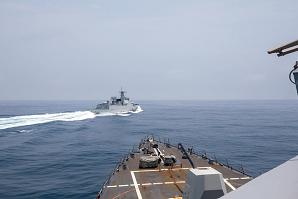 Tensions heightened as US, Allied, and Chinese ships confronted each other. A single mistake could trigger open warfare. Who would blink first? Following a heated exchange of diplomatic messages and announcements, the dictator opened a corridor in the quarantine line, granting unopposed convoy entrance into the island’s primary port. The Americans and their allies rejoiced in this “victory” and hailed it as a Christmas present for the free world.
Tensions heightened as US, Allied, and Chinese ships confronted each other. A single mistake could trigger open warfare. Who would blink first? Following a heated exchange of diplomatic messages and announcements, the dictator opened a corridor in the quarantine line, granting unopposed convoy entrance into the island’s primary port. The Americans and their allies rejoiced in this “victory” and hailed it as a Christmas present for the free world.
This was, however, all part of the dictator’s plan. He believed the Americans had no stomach for a war for national survival and were fully distracted by other international and domestic conflicts. Seemingly oblivious to the unfolding threat, the Americans did not realize they had already essentially been at world war since the Russian invasion of Ukraine in February 2022.
“The Americans are congratulating themselves on their show of force and for breaching our quarantine,” the general continued. “They believe their actions deterred us. Tomorrow is Christmas.”
“Dragon Day has finally arrived,” the dictator said with a sinister smile. “At last, the glorious moment is at hand.”
The general continued. “Tomorrow, we will launch our attack. We have painstakingly masked our preparations. Our strike forces are at full alert and ready. Through our analysis of the war in Ukraine, we found that the first strike should be overpowering, decisive, and deadly. We are tracking the locations of allied military forces by satellite, aerostats, aircraft, drones, and spies. We have real-time knowledge of their current locations. Our aim is to target 70% of  American and Allied forces in the Pacific and continue our hybrid attacks to disrupt their forces in the continental US. We expect to catch our enemies unaware, with their aircraft parked on runways, their air defense and ballistic missile batteries lightly manned, many of their ships in port, and their troops in unprotected barracks. We also will hit their most important satellites with anti-satellite missiles, knocking out their eyes in the sky and disrupting their GPS navigation system. Our first strike will be devastating and will cripple our enemies’ means to see, coordinate, and fight. We expect the full “Dragon Day” attacks to take 2-3 weeks, ensuring the United States cannot mount a significant military response for years. The Americans may even be so demoralized as to sue for peace.”
American and Allied forces in the Pacific and continue our hybrid attacks to disrupt their forces in the continental US. We expect to catch our enemies unaware, with their aircraft parked on runways, their air defense and ballistic missile batteries lightly manned, many of their ships in port, and their troops in unprotected barracks. We also will hit their most important satellites with anti-satellite missiles, knocking out their eyes in the sky and disrupting their GPS navigation system. Our first strike will be devastating and will cripple our enemies’ means to see, coordinate, and fight. We expect the full “Dragon Day” attacks to take 2-3 weeks, ensuring the United States cannot mount a significant military response for years. The Americans may even be so demoralized as to sue for peace.”
“And the latest update on our allies?” The dictator demanded. “Will they do what they agreed to do?”
“Every indication is that the Russians will launch massive missile and hybrid war attacks on US and NATO forces in Europe. There will be no ground invasion. Simultaneously, North Korea will launch every rocket and missile they 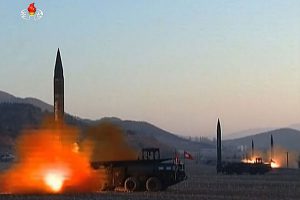 have against the four major US bases in South Korea, but again, no ground invasion. They will avoid attacks on South Korean military forces to confuse the ROK-US alliance. According to all our friends, they will launch their attacks six hours after we launch our initial Dragon Day strikes.
have against the four major US bases in South Korea, but again, no ground invasion. They will avoid attacks on South Korean military forces to confuse the ROK-US alliance. According to all our friends, they will launch their attacks six hours after we launch our initial Dragon Day strikes.
The dictator nodded. Despite their agreements, his allies were still reluctant to commit until they saw his forces engage the United States directly. Friends indeed.
“We will publicly announce that we will not use nuclear weapons unless the Americans and their allies launch in-kind,” the general continued. “They will not risk nuclear war. We will make all our attacks with conventional weapons. Our nuclear forces are on high alert and will launch against targets in the United States, Japan, Australia, and the Philippines if there is any sign of a nuclear attack by any of the enemy’s nuclear partners.”
Someone knocked on the heavy steel door of the dictator’s room. The dictator suddenly woke from his dream and opened his eyes. He was still in bed, in his heavily fortified, underground command bunker. He quickly sat up and gathered his senses. Everything he had just  imagined was only a dream, but a smile crossed his lips as he took in that understanding.
imagined was only a dream, but a smile crossed his lips as he took in that understanding.
“Sir, we are ready to update our plans for Dragon Day whenever you wish.”
“Good,” the dictator replied. “I will be out momentarily, and then we will see how we can turn the world upside down.”
If you enjoyed this post, be sure to tune in and listen to next week’s The Convergence podcast when we sit down with COL John Antal (USA-Ret.) to discuss this troubling scenario and the associated implications for the U.S. Army. Also, check out the following previously published Army Mad Scientist content featuring COL Antal: Top Attack: Lessons Learned from the Second Nagorno-Karabakh War and associated podcast, and Sooner Than We Think: Command Post Survivability and Future Threats and associated podcast.
Explore the TRADOC G-2‘s Operational Environment Enterprise web page, brimming with information on the Operational Environment and how our adversaries fight, including:
Our China Landing Zone, full of information regarding our pacing challenge, including ATP 7-100.3, Chinese Tactics, BiteSize China weekly topics, People’s Liberation Army Ground Forces Quick Reference Guide, and our thirty-plus snapshots captured to date addressing what China is learning about the Operational Environment from Russia’s war against Ukraine (note that a DoD Common Access Card [CAC] is required to access this last link).
Our Russia Landing Zone, including the BiteSize Russia weekly topics. If you have a CAC, you’ll be especially interested in reviewing our weekly RUS-UKR Conflict Running Estimates and associated Narratives, capturing what we learned about the contemporary Russian way of war in Ukraine over the past two years and the ramifications for U.S. Army modernization across DOTMLPF-P.
Our Running Estimates SharePoint site (also requires a CAC to access), containing our monthly OE Running Estimates, associated Narratives, and the 2QFY24 and 3QFY24 OE Assessment TRADOC Intelligence Posts (TIPs).
Read the following Army Mad Scientist threat content:
The Most Consequential Adversaries and associated podcast, with GEN Charles A. Flynn
Volatility in the Pacific: China, Resilience, and the Human Dimension and associated podcast, with General Robert Brown (USA-Ret.)
How China Fights and associated podcast
How Russia Fights 2.0 and associated podcast
Learning from LSCO: Applying Lessons to Irregular Conflict, by Ian Sullivan and Kate Kilgore
Three Dates, Three Windows, and All of DOTMLPF-P, China and Russia: Achieving Decision Dominance and Information Advantage, “No Option is Excluded” — Using Wargaming to Envision a Chinese Assault on Taiwan, and Would You Like to Play a Game? Wargaming as a Learning Experience and Key Assumptions Check by Ian Sullivan
Flash-Mob Warfare: Whispers in the Digital Sandstorm (Parts 1 and 2), by Dr. Robert E. Smith
China: Building Regional Hegemony and China 2049: The Flight of a Particle Board Dragon, the comprehensive report from which this post was excerpted
China’s PLA Modernization through the DOTMLPF-P Lens, by Dr. Jacob Barton
Competition in 2035: Anticipating Chinese Exploitation of Operational Environments
The PLA and UAVs – Automating the Battlefield and Enhancing Training
A Chinese Perspective on Future Urban Unmanned Operations
China: “New Concepts” in Unmanned Combat and Cyber and Electronic Warfare
The PLA: Close Combat in the Information Age and the “Blade of Victory”
About the Author: John Antal is a Soldier, military historian, and leadership expert. He served 30 years in the U.S. Army as a combat arms officer, senior staff officer, and commander. He is the author of two recent books on modern warfare: Next War: Reimagining How We Fight (September 2023) and 7 Seconds to Die: A Military Analysis of the Second Nagorno-Karabakh War and the Future of Warfighting (February 2022).
Disclaimer: The views expressed in this blog post do not necessarily reflect those of the U.S. Department of Defense, Department of the Army, Army Futures Command (AFC), or Training and Doctrine Command (TRADOC).




Great work. I have shared via defenceconnect.com.au in Australia.
Solomon